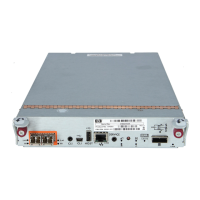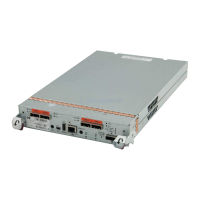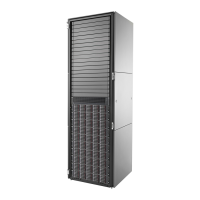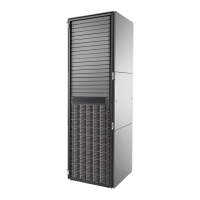Technical white paper | HP P2000 G3 MSA
22
You can use a Vdisk while it is being scrubbed. Background Vdisk scrub runs at background utility priority, which reduces to
no activity if CPU usage is above a certain percentage or if I/O is occurring on the Vdisk being scrubbed. A Vdisk scrub may be
in process on multiple Vdisks at once.
A new Vdisk will first be scrubbed 20 minutes after creation. After a Vdisk is scrubbed, scrub will start again after the interval
specified by the Vdisk Scrub Interval (hours) option. When a scrub is complete, the number of errors found is reported with
event code 207 in the event log.
Note
If you choose to disable background Vdisk scrub, you can still scrub a selected Vdisk by using Media Scrub Vdisk.
Utility priority
• High: Use when your highest priority is to get the system back to a fully fault-tolerant state. This causes heavy I/O with
the host to be slower than normal. This value is the default.
• Medium: Use when you want to balance data streaming with data redundancy.
• Low: Use when streaming data without interruption, such as for a Web server, is more important than data redundancy.
This enables a utility such as Reconstruct to run at a slower rate with minimal effect on host I/O.
• Background: Utilities run only when the processor has idle cycles.
Best Practice: Leave the default setting of Background Scrub ON in the background priority for both Vdisks and available
disks.
Scheduling drive spin down for all Vdisks
For all Vdisks that are configured to use drive spin down (DSD), you can configure times to suspend and resume DSD so that
Vdisks remain spun-up during hours of frequent activity. You can also configure DSD for available disks and global spares.
Note
DSD affects disk operations as follows:
Spun-down disks are not polled for SMART events.
Operations requiring access to disks may be delayed while the disks are spinning back up.
Best Practice: Set DSD for unconfigured disks, spares, and configured Vdisks that do not perform a read/write operation at
least once every 24 hours.
SMART settings
• Don’t Modify: Allows current disks to retain their individual SMART settings and does not change the setting for new disks
added to the system.
• Enabled: Enables SMART for all current disks after the next rescan and automatically enables SMART for new disks added
to the system. This option is the default.
• Disabled: Disables SMART for all current disks after the next rescan and automatically disables SMART for new disks
added to the system.
Best Practice: HP recommends using the default value “Enabled.”
